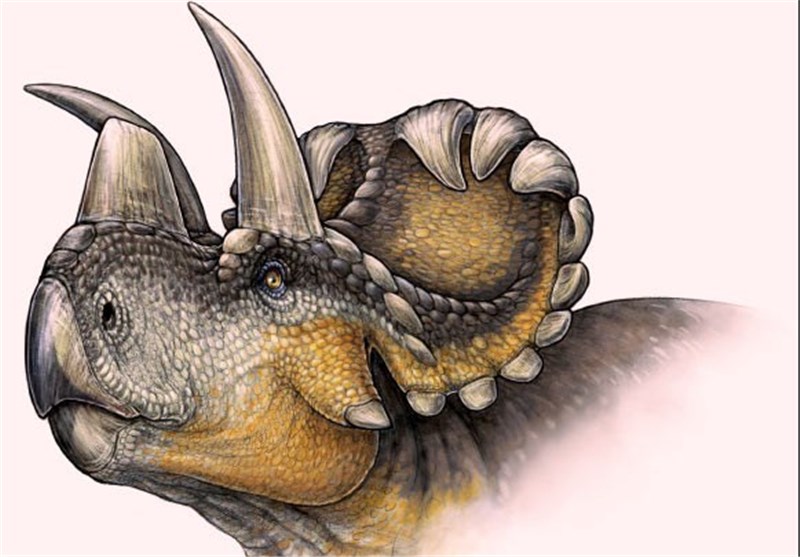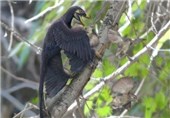New Horned Dinosaur Found in Canada
TEHRAN (Tasnim) - A team of paleontologists has discovered a new genus and species of horned dinosaur, called Wendiceratops pinhornensis, in southern Alberta, Canada.
The generic name Wendiceratops means 'Wendy's horned-face,' and celebrates renowned Alberta fossil hunter Wendy Sloboda.
"This is a well-deserved honor for Sloboda, who has discovered hundreds of important fossils in the last three decades, including several new species," Dr David Evans of the Royal Ontario Museum in Toronto, Canada, who is a co-author of the study published in the journal PLoS ONE, Sci-news reported.
"Wendy Sloboda has a sixth sense for discovering important fossils. She is easily one of the very best dinosaur hunters in the world," he added.
Wendiceratops pinhornensis is described from over 200 bones representing the remains of at least four individuals, three adults and one juvenile, collected from the lower part of the Oldman Formation (middle Campanian).
The dinosaur lived 79 million years ago (Cretaceous period), making it one of the oldest known members of Ceratopsidae, a family of large-bodied horned dinosaurs that includes the famous Triceratops.
It was approximately 20 feet (6 meters) long and weighed more than 1,000 kg. It was an herbivore, and would crop low-lying plants with a parrot-like beak, and slice them up with dozens of leaf-shaped teeth.
The dinosaur also had a fantastically adorned skull, particularly for an early member of Ceratopsidae. Its most distinctive feature is a series of forward-curling hook-like horns along the margin of the wide, shield-like frill that projects from the back of its skull.
Wendiceratops pinhornensis ranks among other recent discoveries in having some of the most spectacular skull ornamentation in the horned dinosaur group.
"Wendiceratops helps us understand the early evolution of skull ornamentation in an iconic group of dinosaurs characterized by their horned faces," Dr Evans said.
The discovery of Wendiceratops pinhornensis also adds to a growing body of research which suggests high diversity of ceratopsid dinosaurs likely associated with a rapid evolutionary radiation in the group.
"The wide frill of Wendiceratops pinhornensis is ringed by numerous curled horns, the nose had a large, upright horn, and it's likely there were horns over the eyes too. The number of gnarly frill projections and horns makes it one of the most striking horned dinosaurs ever found," Dr Evans said.






